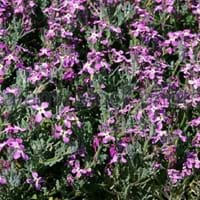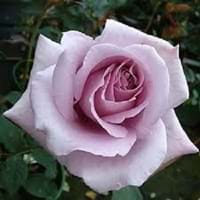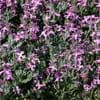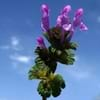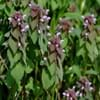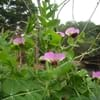Life Span
Annual and Perennial
Perennial
Type
Herbaceous Perennial
Perennial
Origin
Northwestern United States, California, Canada
Hybrid origin
Types
Stock, Tenweeks stock, Gillyflower, Brompton Stock
Crystal Imperial , Double Delight , Elina , Precious Platinum
Number of Varieties
Not Available
Habitat
Cultivated Beds
All sorts of environments
USDA Hardiness Zone
5-9
6-9
Sunset Zone
1a, 1b, 2a, 2b, 3a, 3b, 4, 5, 6, 7, 8, 9, 10, 11, 12, 13, 14, 15, 16, 17, 18, 19, 20, 21, 22, 23, 24
4, 5, 6, 7, 8, 9, 10, 11, 12, 13, 14, 15, 16, 17, 18, 19, 20, 21, 22, 23, 24
Habit
Upright/Erect
Upright/Erect
Flower Color
Light Blue, Lavender, Blue Violet
Baby Pink, Black, Blue, Blue Violet, Creamy Yellow, Dark Blue, Deep Pink, Deep Red, Lavender, Light Yellow, Lilac, Not Available, Pale White, Pale Yellow, Purple, Red
Flower Color Modifier
Bicolor
Multi-Color
Fruit Color
Not Available
Non Fruiting Plant
Leaf Color in Spring
Green
Not Available
Leaf Color in Summer
Green
Not Available
Leaf Color in Fall
Green
Not Available
Leaf Color in Winter
Light Green
Light Green
Leaf Shape
Oblanceolate , Ovate
Pinnate
Plant Season
Spring, Summer
Summer, Fall
Sunlight
Full Sun
Full Sun, Partial Sun
Growth Rate
Very Fast
Medium
Type of Soil
Loam, Sand
Loam, Sand
The pH of Soil
Acidic, Neutral, Alkaline
Acidic, Neutral
Soil Drainage
Well drained
Well drained
Bloom Time
Late Spring, Early Summer, Summer, Late Summer
Summer, Late Summer, Early Fall, Fall, Late Fall
Tolerances
Drought
Drought
Where to Plant?
Container, Ground
Ground, Pot
How to Plant?
Seedlings
Cuttings, Grafting
Plant Maintenance
Medium
Medium
Watering Requirements
Requires regular watering
Do not water the foliage, Water during dry weather
In Summer
Lots of watering
Lots of watering
In Spring
Moderate
Moderate
In Winter
Average Water
Average Water
Soil pH
Slightly Acidic
Acidic, Neutral
Soil Type
Sandy
Loam, Sand
Soil Drainage Capacity
Not Applicable
Well drained
Sun Exposure
Full Sun, Partial Sun
Full Sun, Partial Sun
Pruning
Remove damaged leaves, Remove dead branches, Remove dead leaves
Prune in the late winter or spring, Remove damaged leaves, Remove dead branches, Remove dead leaves
Fertilizers
All-Purpose Liquid Fertilizer
10-10-10, All-Purpose Liquid Fertilizer
Pests and Diseases
Not Available
Aphids, dieback, Leaf rust, Powdery mildew, rose leaf-rolling sawfly
Plant Tolerance
Drought
Drought
Flower Petal Number
Single
Not Available
Foliage Texture
Fine
Coarse
Foliage Sheen
Glossy
Matte
Attracts
Butterflies
Bees, Butterflies, Hummingbirds, Not Available, pollinators
Allergy
Not Available
Pollen
Aesthetic Uses
Not Available
along a porch, deck or patio, Beautification, Bouquets, Cottage Garden, Ornamental use, Showy Purposes, Wild gardens
Beauty Benefits
Not Available
Not Available
Environmental Uses
Air purification
Air purification
Medicinal Uses
Antidote, Aphrodisiac, Expectorant, Stomachic
Vitamin C
Part of Plant Used
Flowers, Leaves, Seedpod
stalk
Other Uses
Used as a dye
Beneficial species for attracting pollinators, Edible syrup, Making Shampoo, Oil is used for aromatherapy, Oil is used in perfume, soaps, creams, etc., Use in Chinese herbology, Used as Ornamental plant
Used As Indoor Plant
No
No
Used As Outdoor Plant
Yes
Yes
Garden Design
Not Available
Cutflower, Feature Plant, Foundation, Mixed Border, Topiary / Bonsai / Espalier
Botanical Name
Matthiola incana
ROSA 'Americana'
Common Name
Blue Thimble Flower, Field Gilia, Gillyflower
Americana Hybrid Tea Rose, Hybrid Tea Rose
In Hindi
gillyflower
संकर चाय गुलाब
In German
Garten-Levkoje
Teehybride
In French
Gillyflower
Hybride de thé
In Spanish
Gillyflower
Híbrido de té
In Greek
Gillyflower
Hybrid tea rose
In Portuguese
Matthiola incana
Hybrid tea rose
In Polish
Gillyflower
Hybrid tea rose
In Latin
Matthiola incana
Hybrid tea rose
Phylum
Magnoliophyta
Magnoliophyta
Class
Magnoliopsida
Magnoliopsida
Family
Polemoniaceae
Rosaceae
Clade
Angiosperms, Asterids, Eudicots
Angiosperms, Eudicots, Rosids
Tribe
Gilieae
Not Available
Subfamily
Polemonioideae
Rosoideae
Number of Species
Not Available
Not Available
Importance of Gillyflower and Hybrid Tea Rose
Want to have the most appropriate plant for your garden? You might want to know the importance of Gillyflower and Hybrid Tea Rose. Basically, these two plants vary in many aspects. Compare Gillyflower and Hybrid Tea Rose as they differ in many characteristics such as their life, care, benefits, facts, etc. Every gardener must at least have the slightest clue about the plants he wants to plant in his garden. Compare their benefits, which differ in many ways like facts and uses. The medicinal use of Gillyflower is Antidote, Aphrodisiac, Expectorant and Stomachic whereas of Hybrid Tea Rose is Vitamin C. Gillyflower has beauty benefits as follows: Not Available while Hybrid Tea Rose has beauty benefits as follows: Not Available.
Compare Facts of Gillyflower vs Hybrid Tea Rose
How to choose the best garden plant for your garden depending upon its facts? Here garden plant comparison will help you to solve this query. Compare the facts of Gillyflower vs Hybrid Tea Rose and know which one to choose. As garden plants have benefits and other uses, allergy is also a major drawback of plants for some people. Allergic reactions of Gillyflower are Not Available whereas of Hybrid Tea Rose have Pollen respectively. Having a fruit bearing plant in your garden can be a plus point of your garden. Gillyflower has no showy fruits and Hybrid Tea Rose has no showy fruits. Also Gillyflower is not flowering and Hybrid Tea Rose is not flowering . You can compare Gillyflower and Hybrid Tea Rose facts and facts of other plants too.
